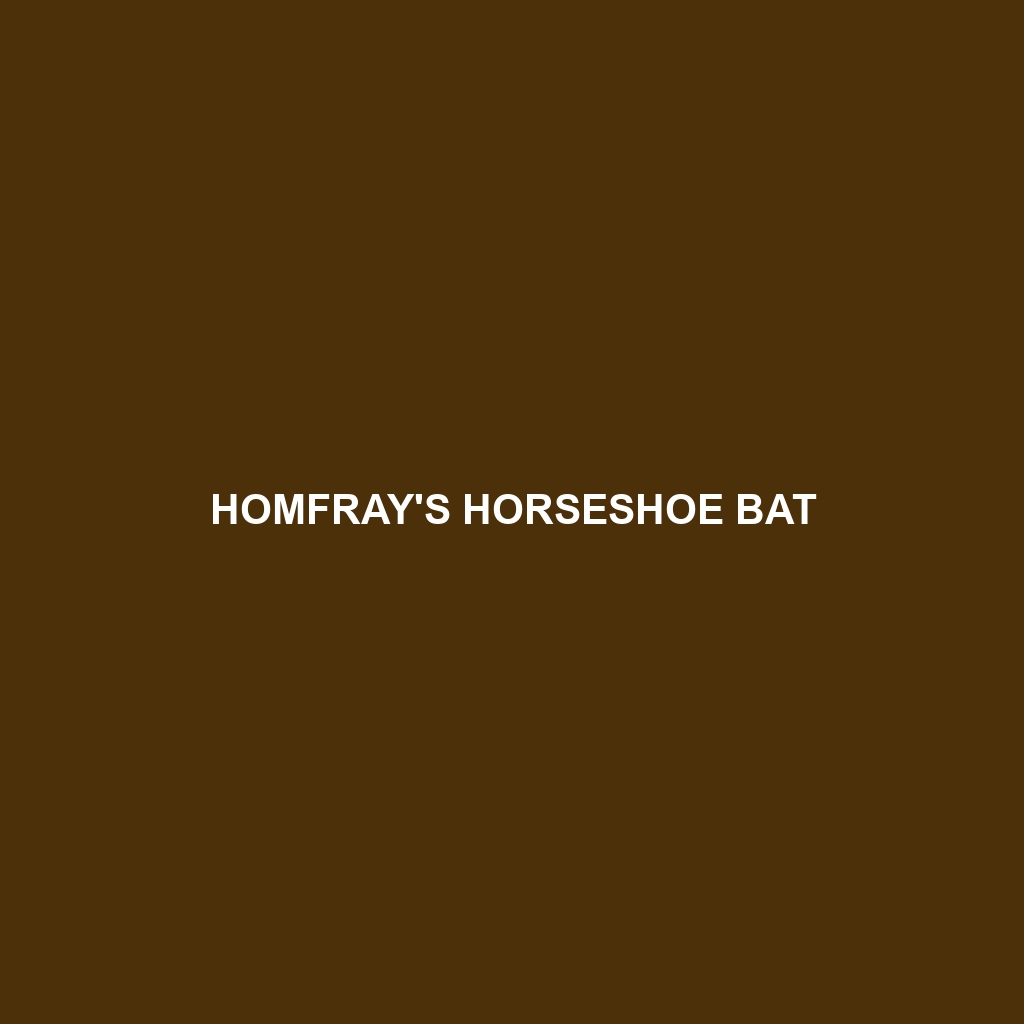Cameroon Horseshoe Bat Species Description
Common Name: Cameroon Horseshoe Bat
Scientific Name: Rhinolophus lesueuri
Habitat
The Cameroon Horseshoe Bat is primarily found in the tropical and subtropical forests of Central Africa, particularly in Cameroon. This species thrives in environments that offer ample roosting sites, such as caves, abandoned buildings, and dense foliage. It prefers humid areas near water sources, indicating a close relationship with diverse ecosystems like riversides and forested regions.
Physical Characteristics
This bat species typically measures between 4 to 8 centimeters in body length, with a wingspan that can reach up to 30 centimeters. The Cameroon Horseshoe Bat is recognized by its distinct horseshoe-shaped noseleaf, which aids in echolocation. Its fur is usually dark brown or gray, which offers excellent camouflage within its forest habitat. Notably, it possesses large ears that enhance its hearing capabilities, making it adept at navigating through dense vegetation.
Behavior
The Cameroon Horseshoe Bat is predominantly nocturnal, emerging at dusk to forage for food. It is known for its agile flight and ability to maneuver through forested areas. Socially, these bats often roost in colonies, which can range from a few individuals to several hundred. They communicate using a series of high-pitched calls, particularly during mating season, which can be attractive to researchers focusing on bat behavior.
Diet
The diet of the Cameroon Horseshoe Bat largely consists of insects, particularly moths and beetles. These bats are skilled hunters, using echolocation to detect their prey in complete darkness. They play a vital role in controlling insect populations, making them essential for maintaining ecological balance in their habitats.
Reproduction
The breeding season for the Cameroon Horseshoe Bat typically occurs in late spring. After a gestation period of about two months, females give birth to a single pup, which is dependent on its mother for food and protection initially. This species exhibits strong maternal care, with mothers often roosting closely in colonies to provide warmth and security for their young.
Conservation Status
The Cameroon Horseshoe Bat is currently classified as Vulnerable on the International Union for Conservation of Nature (IUCN) Red List due to habitat loss and degradation. Conservation efforts are essential to protect its forest habitats from deforestation and human encroachment, ensuring the survival of this unique bat species.
Interesting Facts
One fascinating fact about the Cameroon Horseshoe Bat is its remarkable ability to find and capture prey with great precision, utilizing its advanced echolocation capabilities. Furthermore, due to their unique noseleaf structure, they are among the most effective echolocators in the bat family. They are also known to exhibit a wide range of social behaviors, which are still under study by researchers.
Role in Ecosystem
The Cameroon Horseshoe Bat plays a critical role in its ecosystem as both a predator and prey. By consuming large quantities of insects, it helps to regulate insect populations, thereby contributing to the health of the forest ecosystem. Additionally, they serve as a food source for larger predators, forming an integral part of the food web.
This HTML formatted article provides comprehensive information about the Cameroon Horseshoe Bat while being optimized for search engines.
